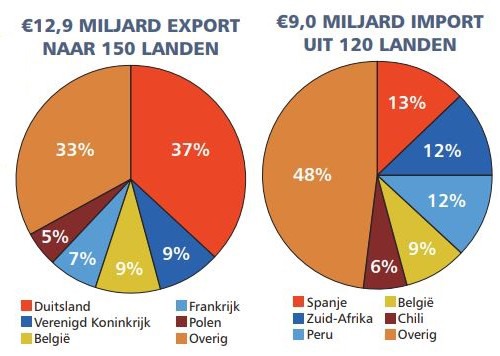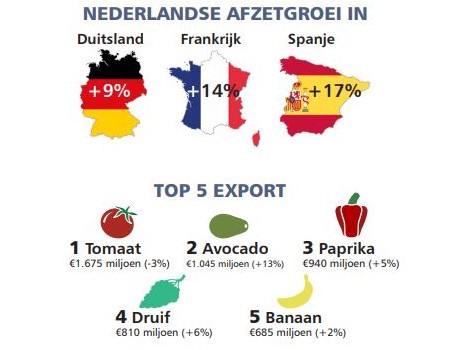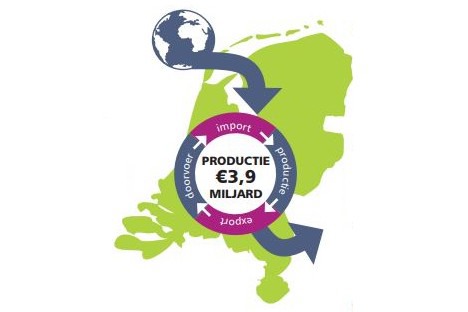In 2020, the Netherlands proved it again - this country is a global fresh fruit and vegetable player. Overseas sales of these products rose by six percent, to €12,9 billion. This growth is mainly due to imported fruit. This often makes its way into Europe via the port of Rotterdam. And it's resold, along with Dutch products, as a total package to the European inland. Fruit sales revenue increased by 13%. However, that of vegetables decreased by one percent compared to 2019. Germany, the United Kingdom, and Belgium are the Netherlands' top three markets.

The Netherlands exported €12,9 billion's worth of fresh fruit and vegetables to 150 countries. Of this, 37% went to Germany. It imported €9 billion's worth of these products. With 12% each, South Africa and Peru rivaled Spain's 13%.
Gateway to Europe
Dutch fresh fruit and vegetable imports rose by eight percent to €9 billion. The Netherlands is an importation gateway to the rest of Europe. Dutch trading companies provide added value. They do things like ripening and packaging products. They also arrange complex logistics. At €1,1 billion, avocados were the top import product.
The strongest growers in the import range were avocados (+22%), blueberries (+14%), and oranges (+29%). More fruit was imported from particularly South Africa and Peru. This is evident from data the Dutch GroentenFruit Huis analyzed. This information is based on data from places like Eurostat.

Dutch sales grew by between nine and 17% in these three countries. And four of the Netherlands top five export products' revenues increased.
Varying results
In 2020, Dutch fruit and vegetables' production value amounted to €3,9 billion. That's compared to €3,7 billion in 2019. Not all growers had an equally successful year. Tomato farmers fared poorer. That was partly due to the closure of the hospitality and catering sector throughout Europe. Bell pepper and aubergine growers, on the other hand, got better prices than a year ago.
The first half of the year went well for pear farmers, with good sales. A smaller harvest resulted in higher apple prices in the second half of 2020. Typical 'catering products' such as redcurrants, herbs, and cresses sales were very difficult. That was due to international restaurant closures. Dutch onions did well both at home and abroad. There was an exceptionally high demand for these from Africa and Asia.
More sales in Europe
The Netherlands sent nine percent more fruit and vegetables to Germany. With a total sales turnover of €4,8 billion, this is the Netherlands' most important market. Bell peppers, cucumbers, tomatoes, and apples contributed most to this growth. The United Kingdom is the second-largest market with a sales value of €1,2 billion (+2%). Sales in France (+14%) and Spain (+17%) also increased, mainly due to higher resales of avocado and oranges.

Fewer passenger flights
However, Dutch fruit and vegetable exports to far-off destinations like the United States and Japan plummeted. That's because there were far fewer passenger flights. Much of the fruit and vegetables transported by air freight are placed in the hold of passenger flights.
Imports, of which 80% was fruit, rose by eight percent. Exports increased by six percent. There was 13% more fruit, but one percent fewer vegetables exported. Germany, the United Kingdom, and Belgium make up 55% of the Netherlands' export sales.
For more information: Wilma van den Oever
Wilma van den Oever
GroentenFruit Huis
Tel: + 31 (0) 793 681 113
Mob: + 31 (0) 630 986 476
Email: vandenoever@groentenfruithuis.nl
